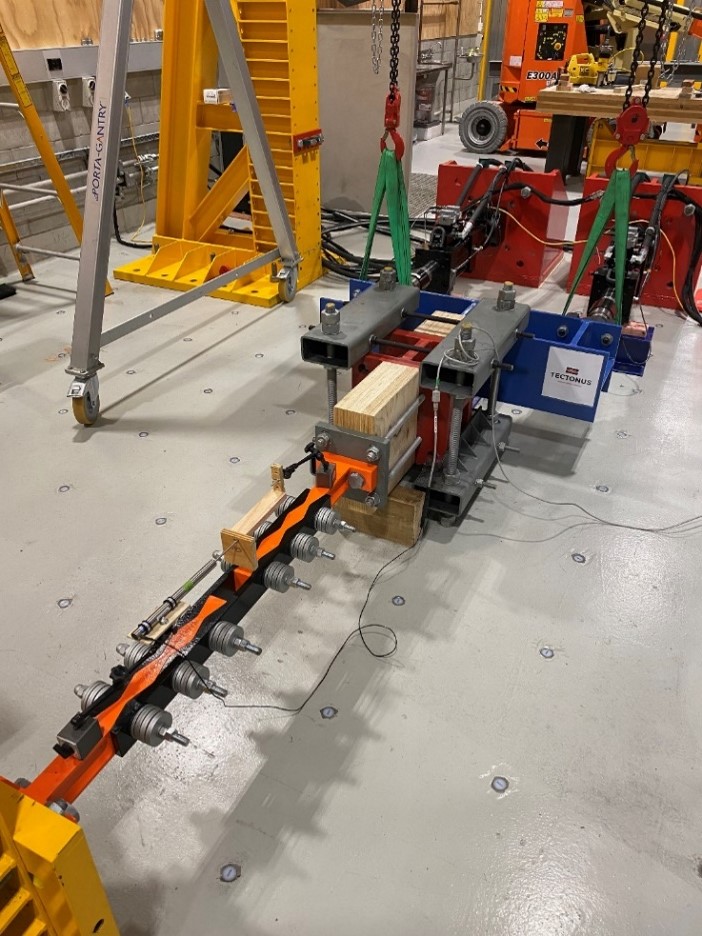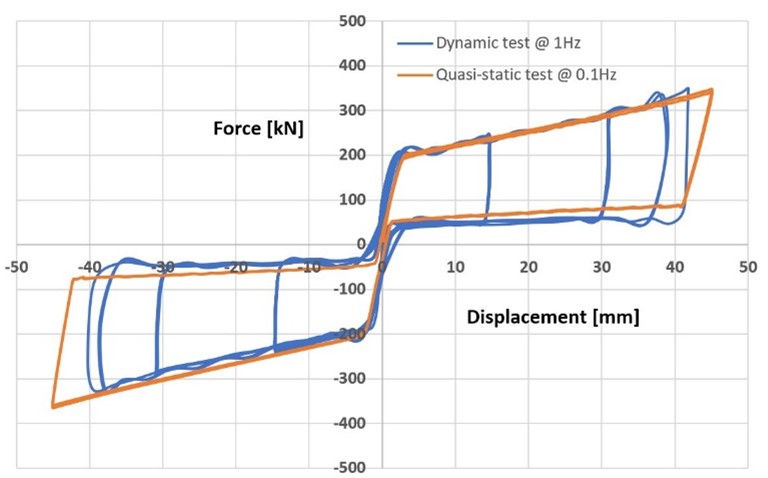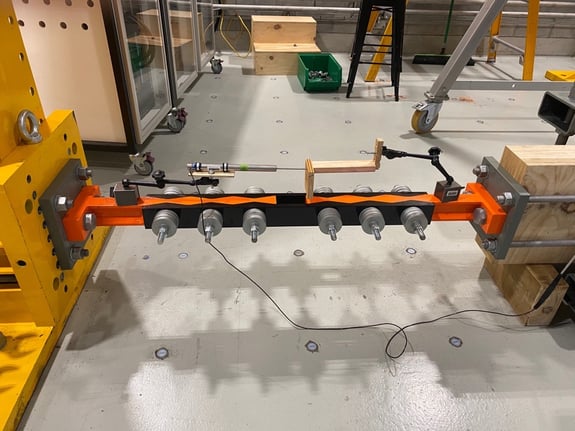Tectonus Resilient Slip Friction Joint (RSFJ)
Dynamic Performance (as per ASCE 7-16)
As part of our ongoing testing program, a 350kN (approx 78 kip) device was tested at Auckland University of Technology's Structures Lab to ascertain its dynamic performance according to ASCE 7-16. The test set up and results are summarised here. The full report is available on request.
Background
The efficiency of friction-based dampers depends on stable frictional resistance on the sliding surfaces to provide reliable energy dissipation. Providing consistent performance has been one of the challenges with friction-based dampers, given possible strength degradation due to surface erosion and wearing under cyclic loads or dependency of the interface coefficient of friction to the sliding velocity under dynamic loads (dictated by the building frequency during an earthquake).
The Tectonus Resilient Slip Friction Joint (RSFJ) sliding surfaces are treated by a special high-tech material sourced from aerospace applications. The surface treatment results in high thermal stability, addressing the challenge of consistent performance evident with other friction dampers.
To demonstrate this, the dynamic performance of Tectonus RSFJ was tested at the Structures Lab of Auckland University of Technology (AUT). Tests were witnessed by an independent Chartered Professional Engineer who is also a member of the New Zealand Society of Earthquake Engineers. (NZSEE).
Test Set Up

The loading protocol was specified as per ASCE 7-16, providing a rigorous testing regime to verify the dynamic performance of the RSFJ.
The number and amplitudes of the loading cycles were as follows:
- 10 cycles at 15mm (37.5% of the maximum displacement)
- 5 cycles at 30mm (75%)
- 3 cycles at 40mm (100%)
The testing program included two different tests with the following frequencies:
- Test #1: Quasi-static at 0.1Hz (3 cycles at 100% displacement)
- Test #2: Dynamic at 1.0Hz (as per ASCE07-16)
The RSFJ tested was comprised of 6 bolts (3 on each side) with a total capacity of about 350kN / approx 78 kip. The test setup included two 250kN MTS dynamic actuators paralleled to provide the capacity and the high frequency needed for this dynamic test validation.
Watch the video of the test below.
Dynamic Testing Results
The results of the joint dynamic performance (at 1.0 Hz) and quasi-static performance (at 0.1 Hz) are presented demonstrating the compatibility of the hysteresis curves after simulated severe events without stiffness and strength degradation. Comparing the dynamic testing with quasi-static shows the velocity independence of the RSFJ performance.

—
Find out more
For the full report, witnessed and signed by the Chartered Professional Engineer, please contact us and we'll be happy to send it to you.
If you have a project at concept stage or later on in the process we'd welcome the opportunity to discuss whether the RSFJ could be a fit. Our in-house engineering team are here to help.
Contact us now for a free consultation.
